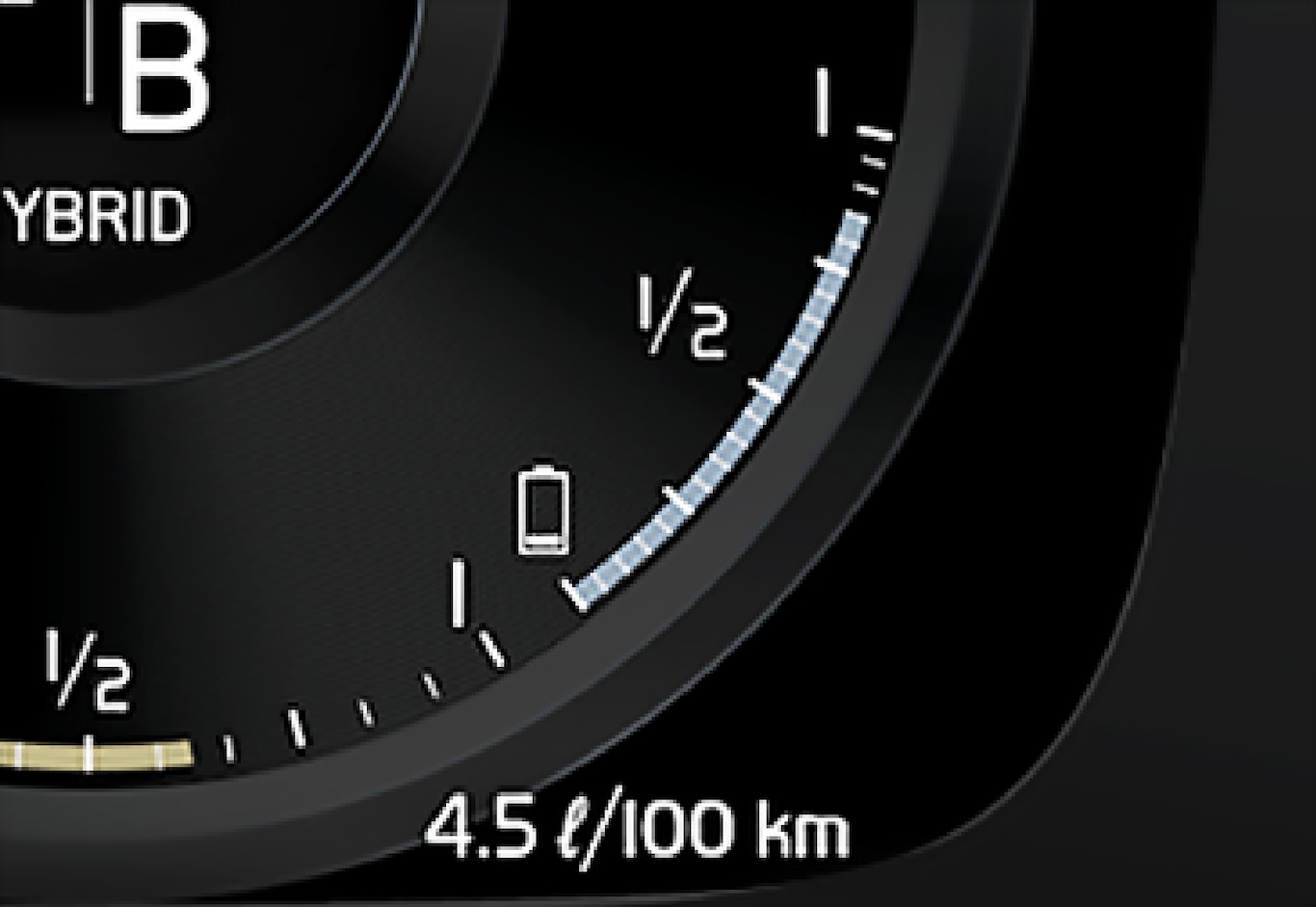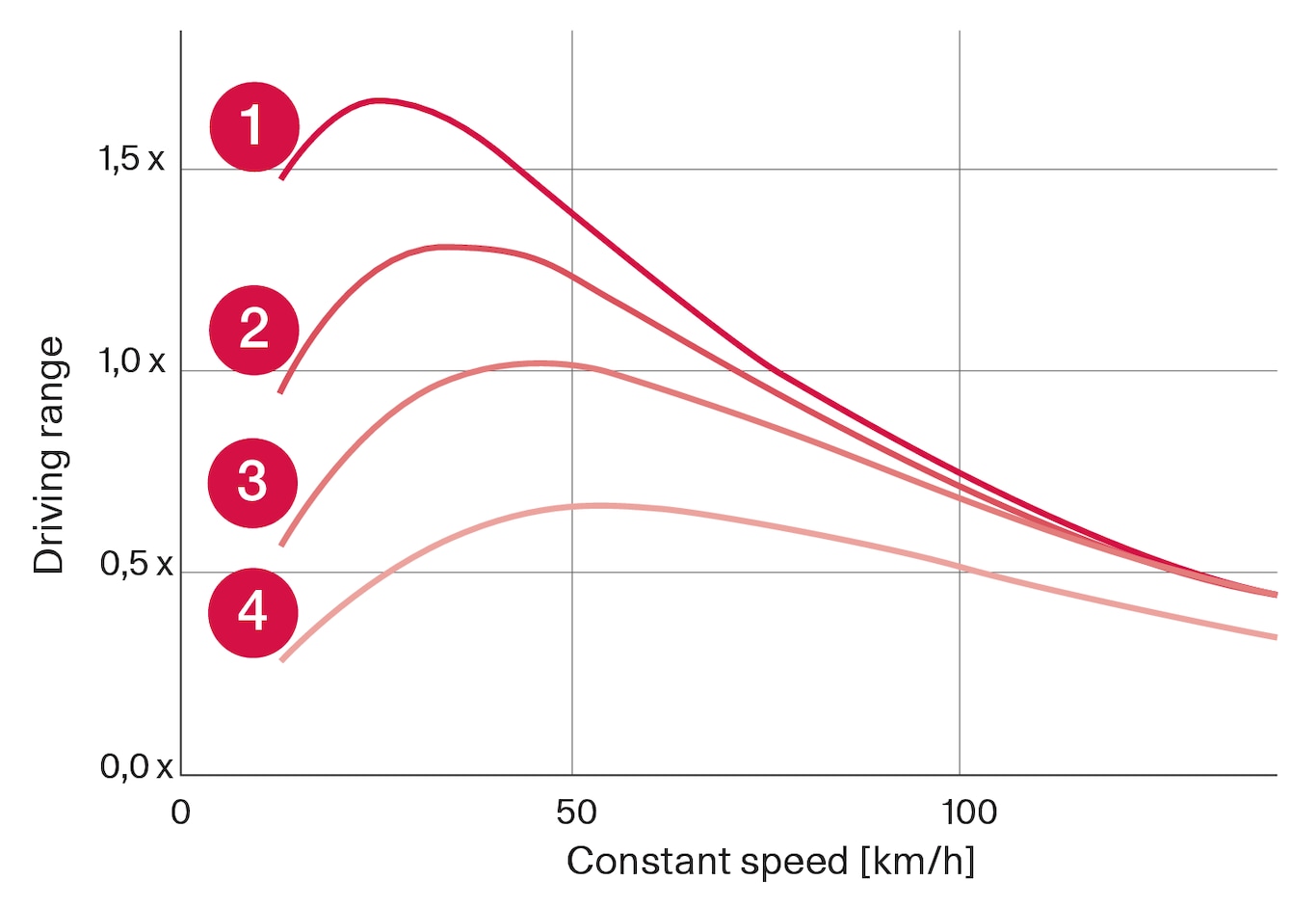Range
The certified value for the car's mileage should not be interpreted as an expected range. The certified value should primarily be used to compare different cars and is obtained during special test cycles.
Range in the driver display

When the car is delivered from the factory, or after a factory reset, the range is based on the certified value
When the car has been driven for a while, the range is based on historical driving patterns. The amount of history used depends on the battery's state of charge. Therefore, the less charge there is in the hybrid battery, the faster the range adapts to a changed driving pattern.
Factors that affect the range
In addition to historical trip data, there are several different factors that affect the range. The longest range is achieved under extremely favourable conditions when all factors have a positive impact.
Examples of factors that affect the range:
- speed
- climate settings
- topography
- preconditioning
- tyres and tyre pressure
- traffic situation
- temperature and weather
- road conditions.
Range based on speed and outside temperature

 20 °C (68 °F) outside temperature and passenger compartment climate Off.
20 °C (68 °F) outside temperature and passenger compartment climate Off. 20 °C (68 °F) outside temperature and passenger compartment climate On.
20 °C (68 °F) outside temperature and passenger compartment climate On. 35 °C (95 °F) outside temperature and passenger compartment climate On.
35 °C (95 °F) outside temperature and passenger compartment climate On. -10 °C (14 °F) outside temperature and passenger compartment climate On.
-10 °C (14 °F) outside temperature and passenger compartment climate On.
The graph shows the approximate relationship between constant speed and range, where a lower constant speed has a positive effect on range.
A higher outside temperature and deactivated climate control are also more beneficial for the range.